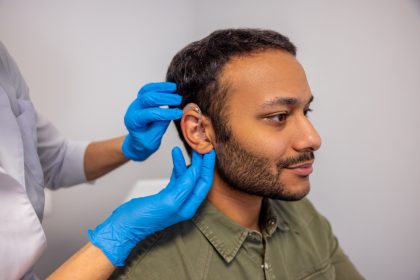Cleaning might be the last thing on your mind after an intimate moment with your favorite toy, but here’s the thing, skipping this crucial step could turn your pleasure products into a health hazard. Studies have shown that improperly cleaned intimate items can harbor harmful bacteria for months, potentially leading to infections and other health issues. Don’t worry though, we’ve got your back with this comprehensive guide that makes cleaning simple and effective.
The science behind toy safety
Your intimate toys encounter all sorts of bodily fluids and bacteria that could become problematic if left unattended. These seemingly harmless substances can harbor infections including common STIs that can survive on surfaces for extended periods. Even if you’re flying solo, maintaining clean toys is crucial for keeping your body’s natural balance in check and avoiding unwanted infections. Research shows that unclean toys can disrupt your body’s natural pH balance, leading to bacterial vaginosis, yeast infections, and other uncomfortable conditions.
Understanding different materials and their care
The world of intimate toys spans a wide range of materials, each requiring specific care. Medical-grade silicone, glass, and stainless steel are considered nonporous, meaning they resist bacteria absorption and are easier to clean thoroughly. Porous materials like rubber, jelly, and certain plastics have microscopic holes where bacteria can hide and multiply. This distinction is crucial because it determines not only how you should clean your toys but also how long they remain safe to use.
High-quality silicone toys can last for years with proper care, while porous materials typically need replacement every six to twelve months, even with regular cleaning. Glass and stainless steel toys are incredibly durable and can last indefinitely when maintained correctly, though they should be regularly inspected for chips, cracks, or other damage that could compromise their safety.
Essential cleaning methods that actually work
The most effective cleaning method depends on your toy’s material and electronic components. For waterproof, nonporous toys, thorough cleaning with warm water and mild, unscented soap remains the gold standard. The water temperature should be warm but not hot enough to burn, as extremely hot water can damage some materials and reduce their lifespan.
Electronic toys require special attention. Always remove batteries or unplug before cleaning, and never submerge electrical components. Use a damp cloth with mild soap for the insertable portions, and a separate clean, damp cloth for any handles or battery compartments. Make sure all parts are completely dry before reassembling or storing.
Deep cleaning and sterilization techniques
Sometimes regular cleaning isn’t enough, particularly after certain types of play or when sharing toys. Sterilization becomes necessary in these cases. Nonporous, non-electronic toys can be boiled for 3-5 minutes or run through a dishwasher cycle without detergent. Some medical-grade silicone toys can even be cleaned in a solution of 10% bleach to water, though they must be thoroughly rinsed afterward.
UV sterilizer boxes, while expensive, offer another effective option for sanitizing toys. These devices use ultraviolet light to kill bacteria and other microorganisms, though they should be used in addition to, not instead of, proper cleaning with soap and water.
Storage solutions that protect your investment
Proper storage is just as important as cleaning when it comes to maintaining your toys’ safety and longevity. Each toy should be completely dry before storage to prevent mold and bacterial growth. Store items separately to prevent material reactions, as some materials can degrade when in contact with others.
Temperature and light exposure matter too. Keep toys away from direct sunlight and extreme temperatures, which can damage materials and compromise their integrity. Dedicated storage containers or bags made from breathable materials like cotton or silk provide ideal protection while allowing any remaining moisture to evaporate.
Signs it’s time for replacement
Even with perfect care, all toys eventually need replacement. Watch for any changes in texture, color, or odor, which can indicate material degradation. Small tears or breaks in the surface make toys impossible to clean properly and require immediate replacement. For porous materials, establish a regular replacement schedule based on frequency of use, typically every 6-12 months.
Electronic toys might show signs of battery corrosion or charging issues before the materials degrade. If you notice any unusual heating during charging or use, discontinue use immediately. Rechargeable batteries typically last 300-500 charging cycles before needing replacement.
Creating a maintenance routine
Developing a regular maintenance routine helps ensure your toys stay clean and safe. Keep cleaning supplies easily accessible but separate from regular household cleaners. Consider keeping a small kit with toy cleaner, lint-free cloths, and storage bags in your bedside drawer for convenience.
Set reminders for regular deep cleaning sessions, particularly for toys used less frequently. This prevents bacteria buildup and helps you stay on top of any potential maintenance issues before they become problems. Remember that spending a few minutes on proper care after each use saves time and money in the long run while protecting your health.















